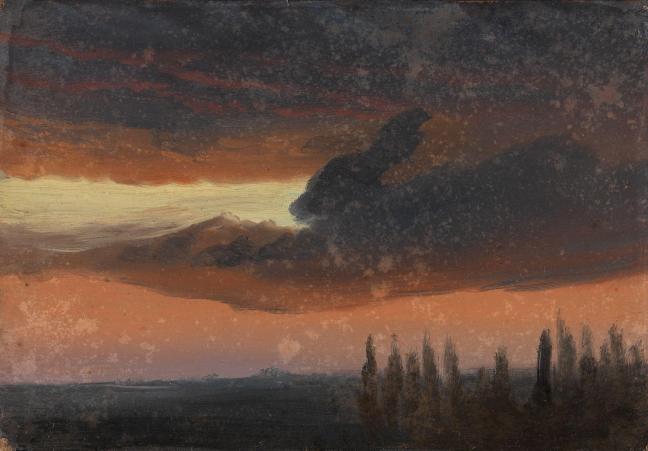Openess and digitalisation provide museums with new experiences in reaching a new audience. In Norway and Sweden, they are using a reusing open source in the daily production. Access to the museums’ APIs as open source are available by need from other cultural actors. Meanwhile open data are by default.

The last decades, museums’ online collections have immersed. In Sweden and Norway, the national museums have valued openness. Primarily in the shape of open data, but also open source. Lately some of the number of active open source repositories have decreased.
The Norwegian national museum is located in Oslo and it is in the middle of a reconstruction which is expected to be done in 2022. The museum’s mission: ‘to make art available for all – and everyone. Museums must reflect society and the time we live in (author’s translation).’ One part of that is to work with open licenses supported by APIs in order to artwork and classification of art.
The Swedish national museum is in Stockholm, where they work from the vision: ‘National Museum for everybody’ (National museum for everyone, my translation). This is the words of Karin Glasemann, digital coordinator at the museum. In a mail she explains that they conserve the collections and make them available for everyone. At the museum, they believe that reuse can give at larger dispersion of knowledge of the collections.
Open for all
In May 2020, Karin Glasemann wrote a longer blogpost about the importance of opening for a new audience by using digital means. There has been, she writes, a shift in which museums have change their mission to empower own cultural experiences:
Ideally, the museum’s role in this scenario shifts from being primarily a collecting, teaching and preserving institution to a more fluid role of providing access, enabling discussion and exchange. – Karin Glasemann, digital coordinator, national museum in Sweden
Old and new sources in Norway
When the Norwegian steered away from using the online platform DigitaltMuseum (financiered of Arts Council Norway), the Norwegians cleaned up this data. At the time, they used the platform to showcase 36.000 pieces and had an open source API to do the work. They still have the API on Github, but it the national museum’s data on the platform is not updated. Metadata from the collection to have had CC0-licens since the launch of the collection on DigitaltMuseum more than 10 years ago.
Tord Nilsen, digital adviser at the Norweigan mational museum says per email that they soon will launch they own API to the collections: ‘This API will be open and accessible to all and it will reflect the collection we have online, approximately 46.000 pieces with meta data and images’ (author’s translation. The museum has not discussed whether this API should be open source.
The days on Github is not over and Dag Hensten from the national museum explains per mail that they with publish codebatabases of own development when it makes sense for other actors in the cultural sector.
Dag Hensten tells me that they use open source IT-solutions internally, including IIPImage for they picture servers with the picture exchange format IIIF. Github repositories are also used for development and documentation for own projects.
The database KulturNav is used in both Norway and Sweden and it has authority lists on open license. The national museums list persons represented in the collections, including artists, designers, architects, and more.
Old and new sources in Sweden
Besides KulturNav, the Swedish museum internally uses an open source CMS and reuses code for the image exchange standard IIIF, Karin tells per email. The Swedish Github has a semi-active respository: the Cronstedt collection. The collection published this in relation to a hackathon. After the hackathon the museums let go of the API. But the collection was soon after available on the European platform Europeana.
The EU cultural heritage portal Europeana is used by the museum to display own collection to people other that the regulars crowd. Even in relation to other art pieces. The National Museum has since 2018 had an open API, which makes the collection’s data available for reuse. The best ways of access the data is through the museum’s or Europena’s API.
Open Data in the digital museum
The data of both museums are freely available for most.
Karin mentions in her blogpost from May 2020in initiative OpenGLAM under the Open Knowledge Foundation. OpenGLAM started in 2018 as an Open Data movement.
The Norwegian national museum exhibits art, architecture, and design under different types of licenses. About 25% are under copyright, the rest is published under CC-BY licens. This means that everyone is free to copy, share, modify, and add on to – under the condition that when sharing, it should say the name of the artist, year, name of the art piece, year, photographer and "the National Museum".
In the chance to CC-BY licenses, Karin writes in her blogpost: ”The museum began to understand that fulfilling its mission to “provide meaningful encounters between people and art” did not necessarily mean getting people to visit the building or the website.”
An advantage with open online collections and public code is that it lures new audience and creators to. Karin writes in an email that the interest in their art pieces has increased and they have met a new audience.
Final take-aways
- Openness gives new life to museum collections and code, however, the museums have not placed they latest APIs on Github.
- The national museums in Sweden and Norway have now more focused on internal open source and externally open data.
-------------
Illustration: Knud Baade, without year, Nasjonalmuseet (Norge)

